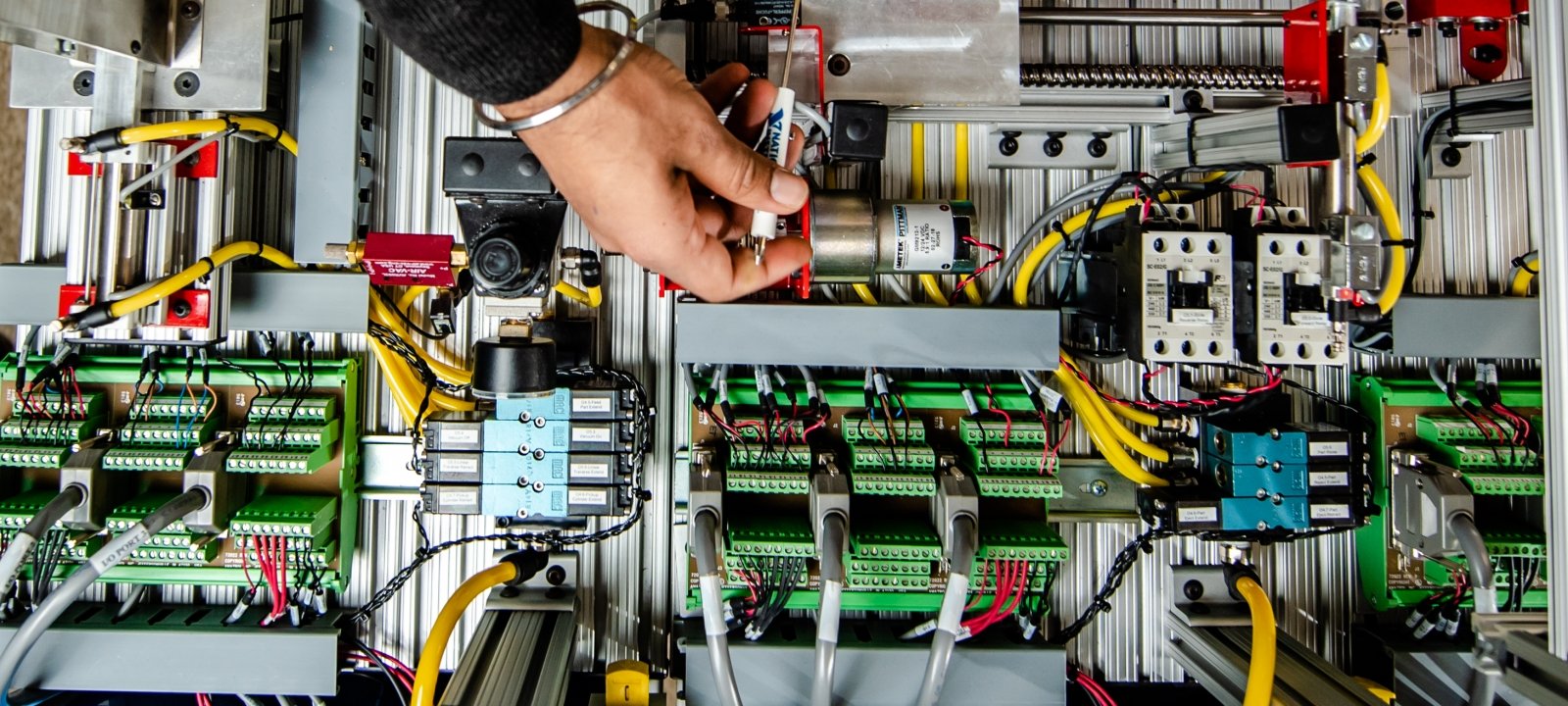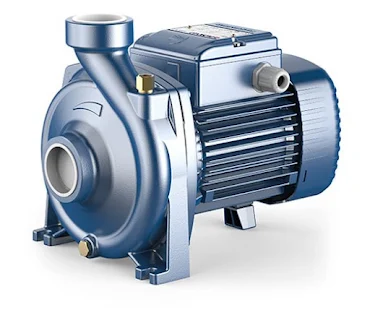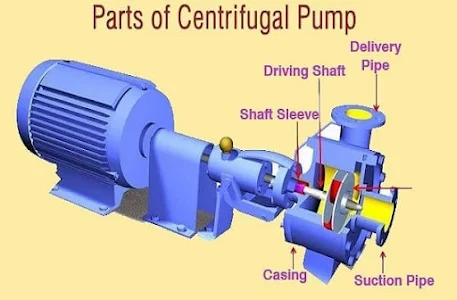Centrifugal pumps
What is the definition of a centrifugal pump?
A centrifugal pump is a mechanical device that moves a fluid by transferring rotational energy from one or more impellers, or driven rotors. Fluid enters the impeller along its axis and is cast out throughout its circumference by centrifugal force through the impeller's vane tips. The impeller's operation increases the fluid's velocity and pressure while also directing it to the pump's exit. The pump casing is designed to compress fluid entering the pump, direct it into the impeller, and then slow and control it before discharge.
What is the principle of operation of a centrifugal pump??
A centrifugal pump's impeller is its most important component. It is made up of a number of curved vanes. Normally, these are sandwiched between two discs (an enclosed impeller). An open or semi-open impeller (supported by a single disc) is preferred for fluids containing entrained materials (Figure 1).
Figure 1
Fluid enters the impeller along its axis (the'eye') and escapes between the vanes along the circumference. The impeller is attached to a motor through a driving shaft and rotates at a high speed on the opposite side of the eye (typically 500-5000rpm). The fluid is accelerated out of the impeller vanes and into the pump casing by the impeller's rotational motion.
Pump casing can be divided into two types: volute and diffuser. The goal of both systems is to convert fluid flow into a pressure-controlled discharge.
The impeller is offset in a volute casing, resulting in a curved funnel with an increasing cross-sectional area near the pump exit. The fluid pressure rises towards the output as a result of this design (Figure 2).
Figure 2
Diffuser designs follow the same basic premise. As fluid is discharged between a series of stationary vanes around the impeller, the fluid pressure rises (Figure 3). Diffusers can be customized for individual uses, making them more efficient. When it is preferable to avoid the extra constrictions of diffuser vanes, volute cases are better suited to applications involving entrained particles or high viscosity fluids. The asymmetry of the volute design can cause the impeller and drive shaft to wear out faster.
What are the main features of a centrifugal pump?
Centrifugal and positive displacement pumps are the two primary types of pumps. Centrifugal pumps, in contrast to reciprocating pumps, are often designed for larger flows and lower viscosity liquids, down to 0.1 cP. Centrifugal pumps will account for 90% of the pumps in some chemical facilities. Positive displacement pumps, on the other hand, are favored in a number of applications.
Major Parts of Centrifugal Pump
The major parts of a centrifugal pump are described in detail below.
1) The casing
The impeller is surrounded by a casing, which is a narrow air passage. Before the fluid escapes the casing and enters the discharge pipe, it is designed in such a way that the fluid kinetic discharges by the impeller outlet energy are converted into pressure energy. The centrifugal pump is one of the primary components of the casing.
There are three different types of casing.
(a) Volute Casing:
It's made in the shape of a spiral. The flow area of the volute case gradually increases. The speed of the fluid slows as the flow area grows, and the pressure of the fluid rises. The diagram above depicts this sort of casing.
(b) Vortex Casing:
Between the casing and the impeller, the vortex housing creates a circular cavity. It is used to prevent energy loss due to swirl formation. Compared to volute casings, these forms of casings are more efficient.
(c) Guide Blades Casing:
The runner is surrounded by a varied number of guide blades in this sort of casing. These blades are attached to a diffuser, which is a ring. The guiding blades are designed in such a way that the water departing the impeller as it reaches the diffuser is unaffected. The water velocity decreases as the area of these blades increases, while the pressure energy increases. The casing is almost always concentric with the impeller.
2) Suction Pipe
The suction pipe's bottom end is immersed in the water we want to lift, while the other end connects to the centrifugal pump's input.
At the bottom of the centrifugal pump, there is a foot and a strainer valve. These valves are responsible for removing material such as sand and leaves and allowing water to flow higher.
3) Rotating Parts
An impeller and a shaft are two elements of a centrifugal pump.
i) Impeller: The impeller is a device that allows water to flow through
The centrifugal pump's impeller is one of the most crucial components. The fluid's pressure and speed are increased as a result of this process. The fluid is accelerated by the impeller's centrifugal force. It is subdivided further into the sections listed below.
a) Open impeller:
No crown or bottom plate are present on the impeller. The open impeller can be used to remove solid particles from liquids, such as water that contains paper pulp or sand, for example.
b) Close impeller:
On both sides of the blades, these impellers have cover plates. To get pure water, a close impeller is used.
c) Semi-open impeller:
There is no crown plate on this type of impeller, simply a base plate. These impellers are designed to handle fluids that contain loading debris.
ii) Shaft:
The impeller is rotated by the shaft. It is designed to transmit the torque generated when the impeller and other rotating parts are started and operated.
iii) Shaft Sleeve:
The sleeve protects the pump shaft against corrosion and leaking. The sleeve must be sealed on one end.
4) Delivery Pipe
The fluid is lifted to the desired location by this portion of the centrifugal pump. The delivery pipe has one end that connects to the pump's outlet and the other end that connects to the height where we wish to transfer fluid.
Advantages and Disadvantages:
Advantages:
- The head on these pumps is quite high.
- It is dependable.
- It has a small footprint.
- A turbine pump is ideal for managing a gas-liquid mixture.
Disadvantages:
- The flow rate of the turbine pump is low.
- There is no simple way to change the performance.
- It has a small internal clearance that necessitates the use of clean water.










0 Comments